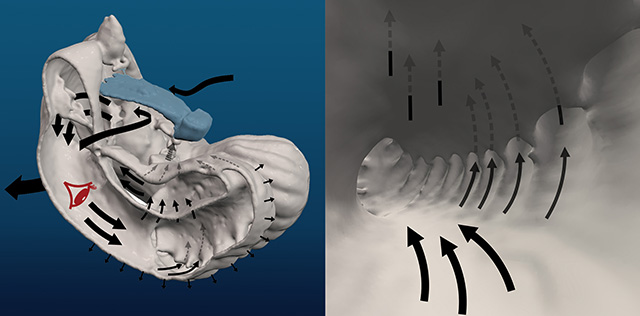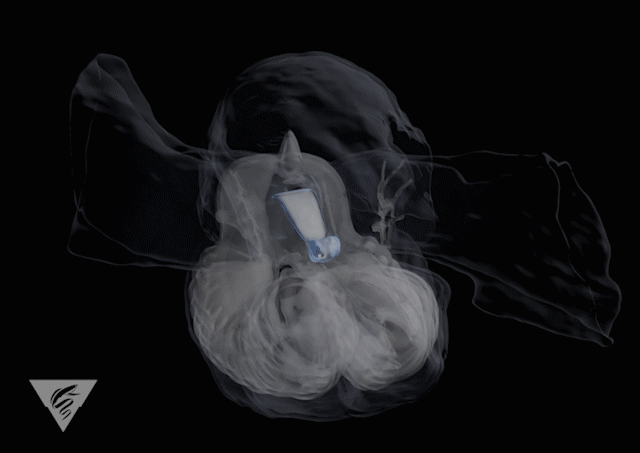Tiny transparent sea creatures make elaborate houses out of their own mucus. Now, researchers have illuminated the framework within these structures.
Small, transparent sea creatures called larvaceans build mansions out of mucus that house, protect and feed them, but these “snot palaces” are so delicate that scientists have found them hard to study. Now, researchers have used lasers mounted on an undersea robot to understand the architecture of the larvaceans’ gossamer homes, reports Seth Borenstein for the Associated Press.
The new study, published this week in the journal Nature, focuses on the giant larvaceans, which, despite their name, are only about five inches long. They look like see-through tadpoles with flat, beaver-style tails, and they hang in the ocean depths capturing floating bits of food in their houses. These creatures construct their dwellings at a tiny scale and inflate them to reach sizes of more than three feet across, which is equivalent to five-story buildings compared to the larvacean’s size, according to a statement.
Since the giant larvacean’s snotty digs are too fragile to study at the surface, researchers with the Monterey Bay Aquarium Research Institute (MBARI) used a 12,000-pound, remotely-operated vehicle equipped with scanning lasers to get a closer look, reports Rosanna Xia of the Los Angeles Times.
When the robot encountered a giant larvacean, the team used its sheet-like laser beam to illuminate the design of the mucus house by tracking the movements of particles through its various cavities, per the statement. The slices of the giant larvacean’s pad illuminated by the laser’s broad beam also provided the researchers with cross-sections of its internal structure. By combining these cross-sections the team created a 3D image of the transparent animal’s filtration system, much like a radiologist taking a CAT scan of the human body.
The researchers found these snot palaces have two layers: an amorphous outer bubble and a more structured, fist-sized inner sanctum made of two fluted chambers that the larvacean pumps water through by beating its tail. Both layers filter potential food particles from the water column, and are connected by a pair of inlet channels. The whole apparatus works to eventually deliver the choicest morsels to the larvacean’s mouth. With just the flaps of their tails, these tiny animals can filter more than 20 gallons of seawater per hour, according to the statement.
These gloopy home bodies construct their dwellings out of mucus secreted by cells on the tops of their heads and abandon them every day or so when they become too clogged with particles. Prior research has shown these parachute-like discards provide a crucial source of food for deep sea ecosystems, which also serves to sequester tons of carbon, combating climate change, according to the LA Times.
https://www.smithsonianmag.com/smart-news/scientists-tour-snot-palaces-deep-180975057/

